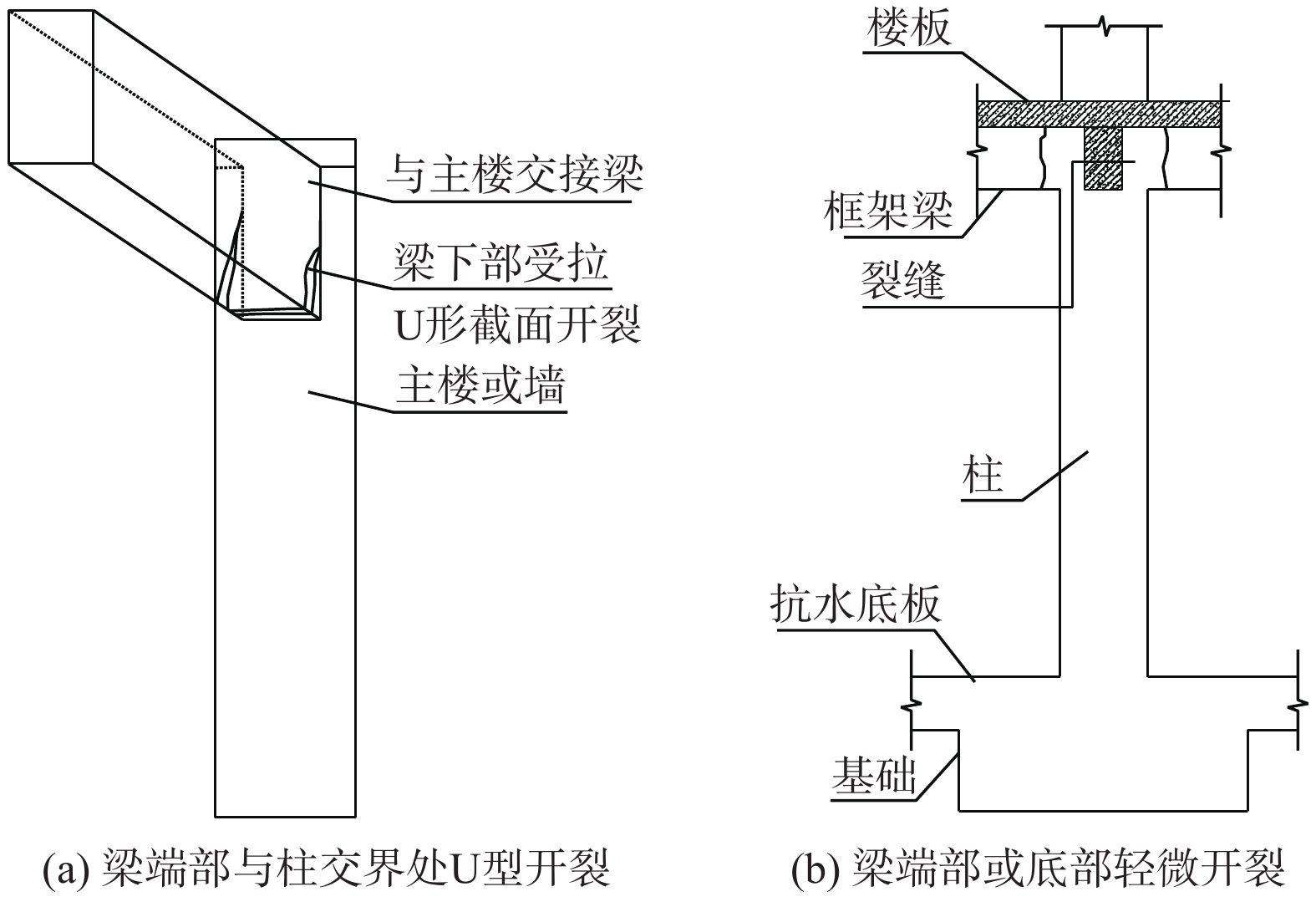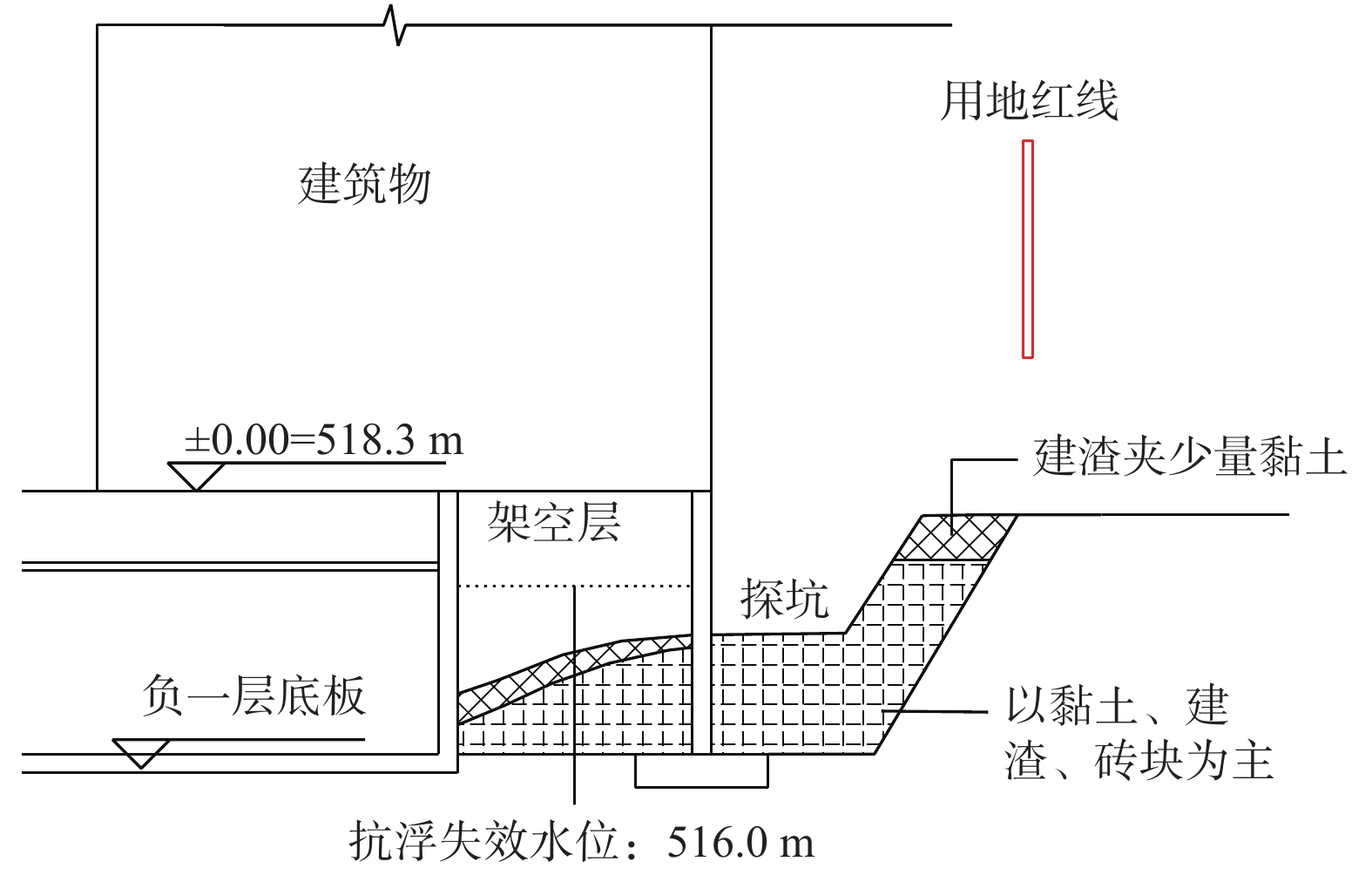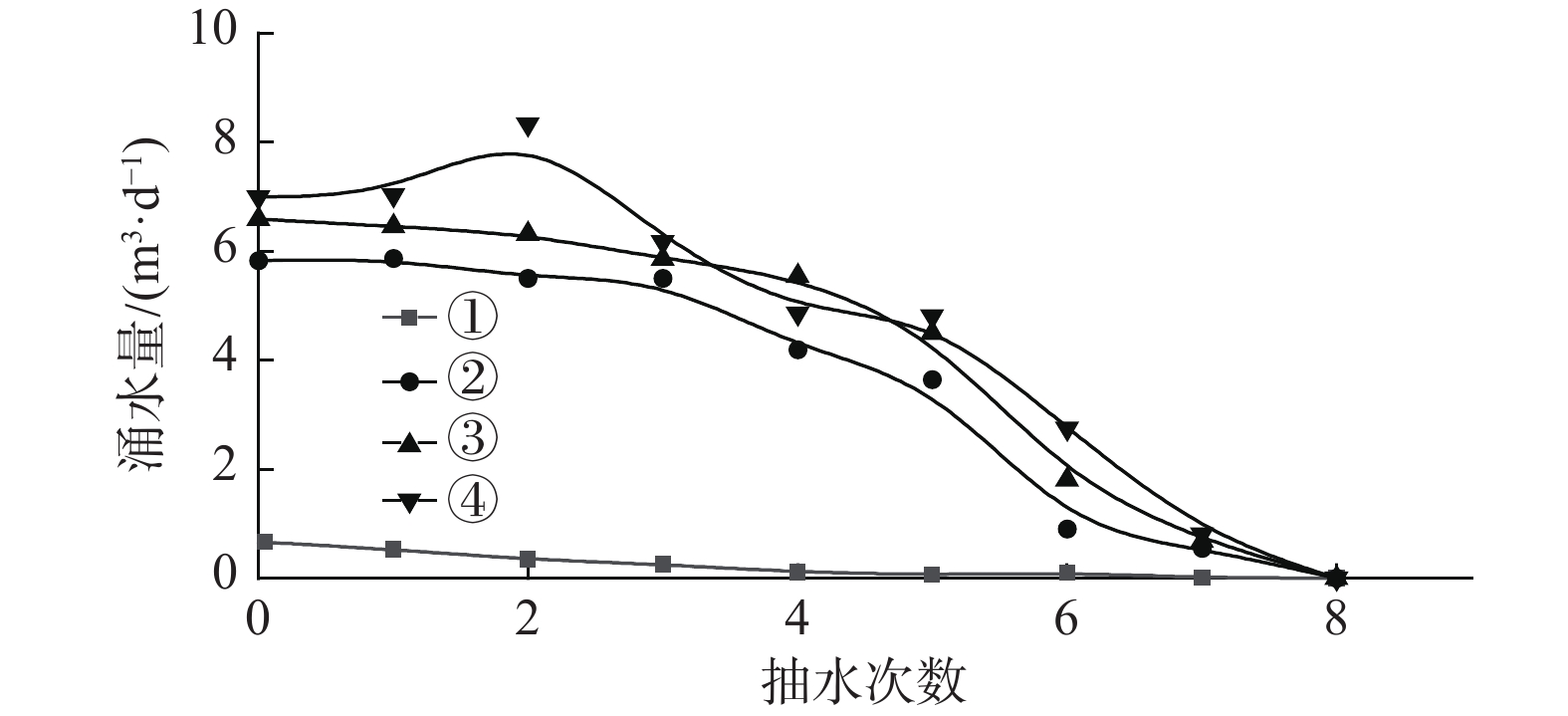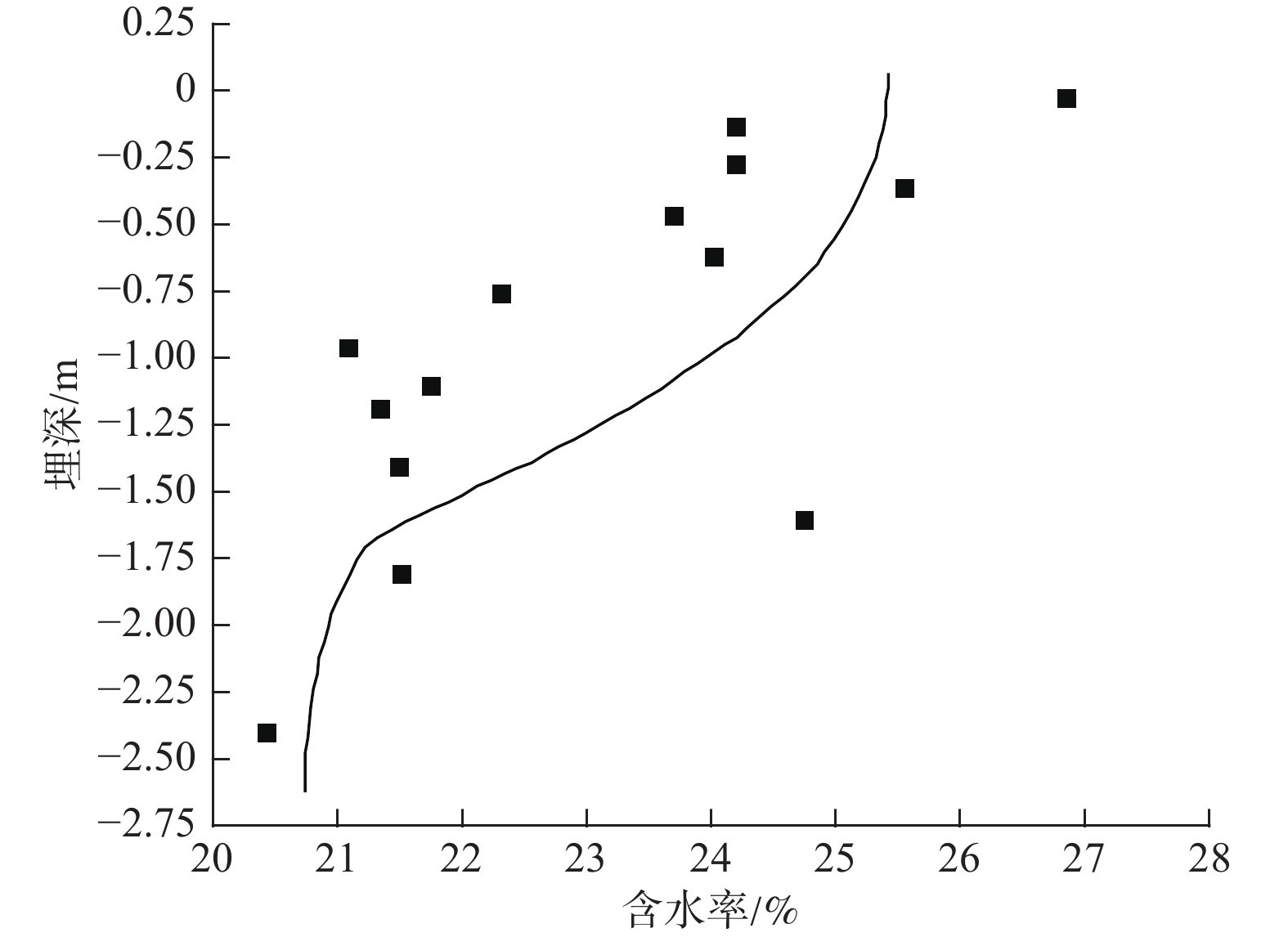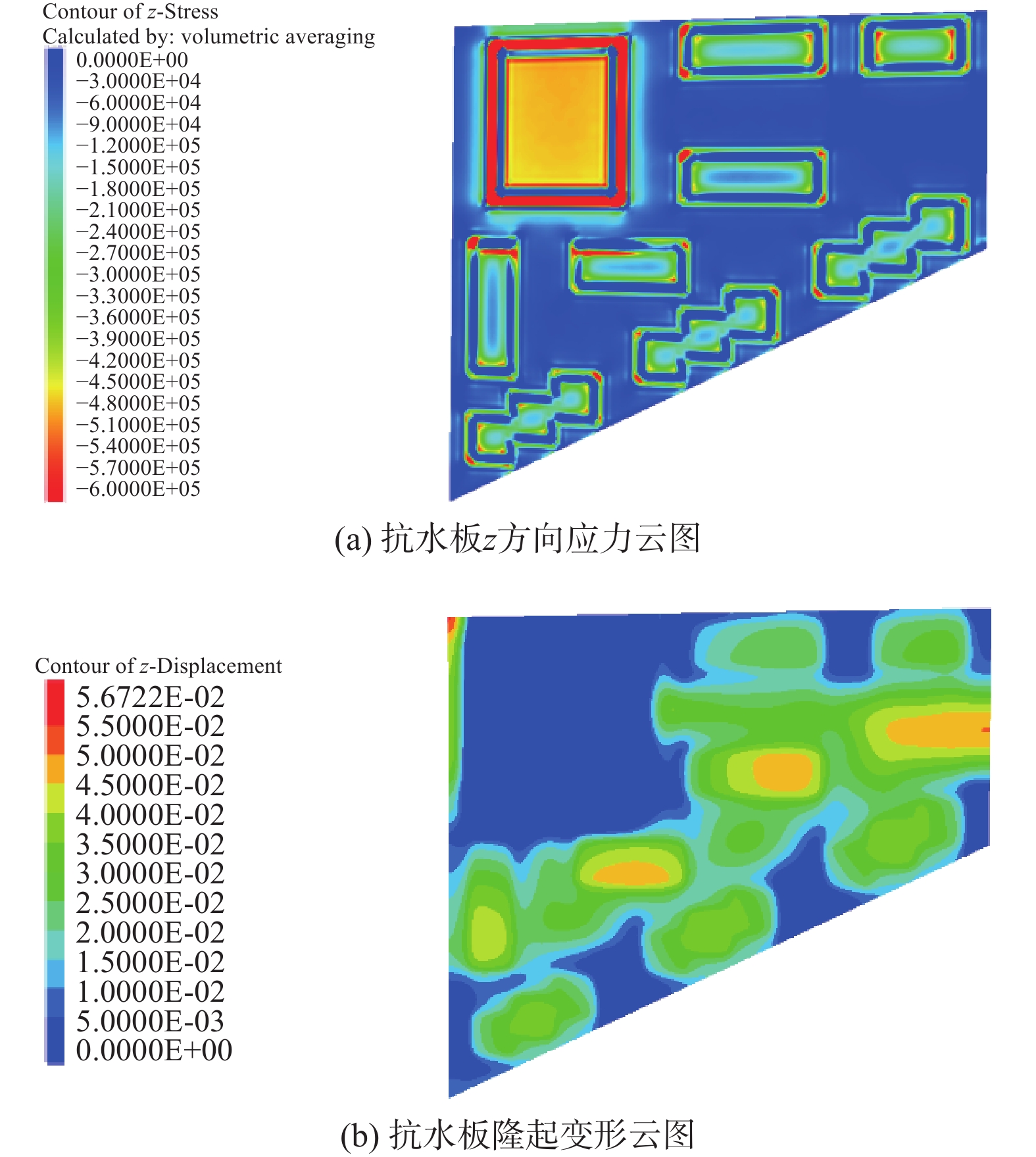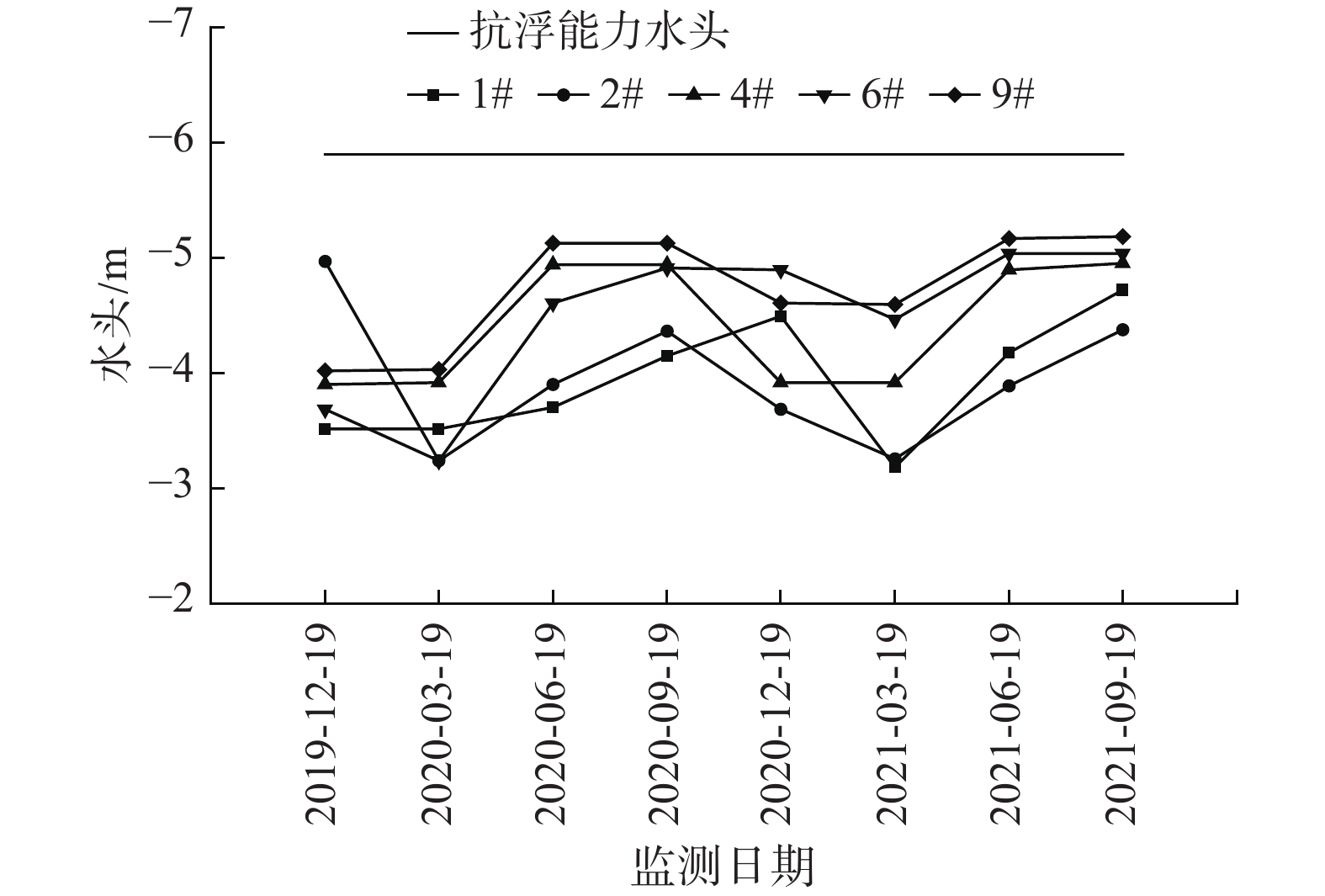Anti-floating failure mechanism of underground structures in expansive soil area and application of active anti-floating measures
-
摘要:
膨胀土地层透水性弱、渗透性低,一般被视为相对隔水层或隔水层,其抗浮设防水位需综合考虑场地渗流特性、肥槽填料特性、水-结构相互作用而确定,建筑工程抗浮设计问题素来棘手难解。本文依托成都膨胀土地区某商住楼地下室局部抗浮失效案例,通过地下室渗漏水水源调查、基底地下水流量监测、排水系统排泄能力评价等方法,认为地下室上浮属肥槽施工控制不当使高压水渗入抗水板底部进而导致水力学条件失衡造成的。基于此,结合FLAC3D有限差分法,详细探讨了地下水浮力及膨胀土膨胀力作用下地下结构的力学行为特征。结合工程实际,提出一种以“卸压”为主的地下室抗浮方法,其理念是在底板开设卸压孔使地下水流动,通过主动式泄排适量地下水来减小或消除水浮力,并辅以观测及自动控制措施,实现抗浮目的。工程监测结果表明,流量及水头可控,运行效果良好,成本低廉。
Abstract:Expansive soil is a weakly permeable stratum with low permeability. It is generally regarded as a relative aquiclude or water resisting layer. Its anti-floating water level is needed to comprehensively consider the site seepage characteristics, fertilizer tank filler characteristics and water-structure interaction, which makes the anti-floating problem very prominent and difficult to deal with. Based on a building failure treatment case in the expansive soil area of Chengdu, through the investigation of the water leakage source of the basement, the monitoring of groundwater flow and the evaluation of the discharge capacity of the drainage system, it is considered that the basement floating is caused by the improper construction control of the fertilizer tank, which makes the high-pressure water penetrate into the bottom of the water resistant plate, resulting in the imbalance of hydraulic conditions. Combined with the FLAC3D finite difference method, the mechanical behavior characteristics of underground structures under the action of groundwater buoyancy and expansive force are discussed in detail. Combined with the engineering practice, an anti-floating method based on "pressure relief" is proposed. The idea is to open a pressure relief hole in the bottom plate to make the groundwater flow and convert the hydrostatic pressure into kinetic energy without changing the groundwater level, and supplement observation and automatic control measures is carried out to achieve the purpose of anti-floating. The monitoring results of the project show that the flow and head are controllable and the operation cost is low.
-

-
表 1 研究区岩土体物理力学参数
Table 1. Physical and mechanical parameters of rock and soil mass
岩土体类型 重度/
(kN·m−3)内摩擦角/
(°)黏聚力/
kPa压缩模量/
MPa渗透系数/
(m·d−1)杂填土 19.0 8.0 8 0.2 黏土 20.0 6.0 15 5.0 2.5×10−3 含黏土卵石 19.5 20.0 8 1.5 全风化泥岩 19.5 15.0 15 6.5 1.2 表 2 现场渗透试验结果
Table 2. Field penetration test results
渗透点编号 Ki/(m·d−1) K均值/(m·d−1) 1 0.754 0.858 0.639 0.750 2 1.529 1.334 1.910 1.591 3 0.692 0.403 0.051 0.382 4 8.222 8.249 8.168 8.213 5 7.584 7.320 7.584 7.496 6 7.019 7.019 7.019 7.019 7 9.310 9.022 9.897 9.076 8 6.273 6.153 6.095 6.174 9 10.26 10.28 10.19 10.243 注:考虑到渗透试验初始状态对入渗影响较大,在处理时采用试验结束时段数据进行从后往前逐段累加处理,分别求得不同渗透系数Ki。 表 3 肥槽积水补给来源水量计算汇总表
Table 3. Calculation summary of water supply source of fertilizer tank
补给来源 简化计算
补给量/m3对肥槽水位
的影响/m补给方式 降雨 12690 7.35 直接补给肥槽 膨胀土层地下水 微弱 微弱 远端地表水
(北干支渠)微弱 微弱 通过膨胀土层或填土层径流补给 上层滞水 600 0.3~0.4 直接补给肥槽 表 4 结构体物理力学参数
Table 4. Physical and mechanical parameters of structure
内容 密度/
(kg·m−3)黏聚力/
kPa内摩擦角/
(°)体积模量/
MPa剪切模量/
MPa素混凝土垫层 1870 16.65 13.30 4.04 1.76 抗水板 1830 10.87 17.74 3.73 1.53 建筑体 1910 11.98 20.37 4.51 2.08 表 5 排水卸压措施基本设计参数
Table 5. Basic design parameters of the drainage and pressure relief measures
参量名称 符号 建议取值 安全系数 k 1.4 潜水含水层厚度 H 8.5 m 卸压降水影响半径 R 210 m 卸压水位降深 h0 7 m 单个卸压点排水能力 q 100 m3/d 肥槽入渗系数 λy 0.2 地表径流系数 φ 0.5 设计暴雨强度 Pʹ 700 mm/d 汇水面积 S汇水 12690 m2 泄压孔半径 rw 0.053 m -
[1] 于贵,李星,舒中文,等. 高层建筑地下室上浮变形特征及处置措施研究[J]. 地下空间与工程学报,2020,16(1):211 − 218. [YU Gui,LI Xing,SHU Zhongwen,et al. Research on floating deformation characteristics and treatment measures of high-rise building basement[J]. Chinese Journal of Underground Space and Engineering,2020,16(1):211 − 218. (in Chinese with English abstract)
[2] 朱东风,曹洪,骆冠勇,等. 截排减压抗浮系统在抗浮事故处理中的应用[J]. 岩土工程学报,2018,40(9):1746 − 1752. [ZHU Dongfeng,CAO Hong,LUO Guanyong,et al. Application of interception and drainage anti-floating system in treatment of uplift accidents[J]. Chinese Journal of Geotechnical Engineering,2018,40(9):1746 − 1752. (in Chinese with English abstract)
[3] 王海东,罗雨佳. 超大地下室施工期抗浮破坏机理分析与应对思考[J]. 铁道科学与工程学报,2019,16(10):2538 − 2546. [WANG Haidong,LUO Yujia. Analysis of the mechanism of anti-floating damage and its countermeasures during construction period of oversized underground garage[J]. Journal of Railway Science and Engineering,2019,16(10):2538 − 2546. (in Chinese with English abstract) doi: 10.19713/j.cnki.43-1423/u.2019.10.021
[4] 崔虎群,李文鹏,康卫东,等. 黑河中游不同灌溉方式下地下水入渗补给特征研究[J]. 水文地质工程地质,2022,49(3):22 − 28. [CUI Huqun,LI Wenpeng,KANG Weidong,et al. A study of groundwater recharge under different irrigation conditions in the middle reaches of the Heihe River[J]. Hydrogeology & Engineering Geology,2022,49(3):22 − 28. (in Chinese with English abstract) doi: 10.16030/j.cnki.issn.1000-3665.202111019
[5] 张晨晨,黄翀,何云,等. 黄河三角洲浅层地下水埋深动态与降水的时空响应关系[J]. 水文地质工程地质,2020,47(5):21 − 30. [ZHANG Chenchen,HUANG Chong,HE Yun,et al. An analysis of the space-time patterns of precipitation-shallow groundwater depth interactions in the Yellow River Delta[J]. Hydrogeology & Engineering Geology,2020,47(5):21 − 30. (in Chinese with English abstract) doi: 10.16030/j.cnki.issn.1000-3665.202002033
[6] 中华人民共和国住房和城乡建设部. 建筑工程抗浮技术标准: JGJ 476—2019[S]. 北京: 中国建筑工业出版社, 2019
Ministry of Housing and Urban-Rural Development of the People's Republic of China. Technical standard for building engineering against uplift: JGJ 476—2019[S]. Beijing: China Architecture & Building Press, 2019. (in Chinese)
[7] 黄俊光,李健斌,秦泳生. 超深地下工程抗浮技术的探索[J]. 建筑结构,2020,50(10):129 − 134. [HUANG Junguang,LI Jianbin,QIN Yongsheng. Exploration of anti-floating technology for super-deep underground structures[J]. Building Structure,2020,50(10):129 − 134. (in Chinese with English abstract) doi: 10.19701/j.jzjg.2020.10.018
[8] XIAO Y P,CAO H,LUO G Y,et al. Modelling seepage flow near the pipe tip[J]. Acta Geotechnica,2020,15(7):1953 − 1966. doi: 10.1007/s11440-019-00878-8
[9] 骆冠勇,马铭骏,曹洪,等. 临江地下结构主被动联合抗浮方法及应用[J]. 岩土力学,2020,41(11):3730 − 3739. [LUO Guanyong,MA Mingjun,CAO Hong,et al. A new anti-float method for riverside underground structures:drainage corridor combined with uplift piles or uplift anchors[J]. Rock and Soil Mechanics,2020,41(11):3730 − 3739. (in Chinese with English abstract) doi: 10.16285/j.rsm.2020.0608
[10] 朱东风. 地下结构截排减压抗浮法渗控关键问题研究[D]. 广州: 华南理工大学, 2019
ZHU Dongfeng. A study on seepage control issues of anti-uplift method for underground structures based on intercepting and discharging water[D]. Guangzhou: South China University of Technology, 2019. (in Chinese with English abstract)
[11] NI P P, KANG X, SONG L H, et al. Model tests of buoyant force on underground structures[J]. Journal of Testing and Evaluation, 2019, 47(2). DOI: 10.1520/JTE20170017.
[12] 陆启贤. 土中孔压传递规律及水浮力折减机理研究[D]. 南宁: 广西大学, 2019
LU Qixian. Study on pore pressure transfer rule and water buoyancy reduction mechanism[D]. Nanning: Guangxi University, 2019. (in Chinese with English abstract)
[13] 木林隆, 王乐, 李杰, 等. 地下结构对地下水渗流场水位改变的数值分析[J]. 土木工程学报, 2019, 52(增刊1): 78 − 84
MU Linlong, WANG Le, LI Jie, et al. Numerical analysis of influence of the underground structure on seepage[J]. China Civil Engineering Journal, 2019, 52(Sup 1): 78 − 84. (in Chinese with English abstract)
[14] 王新,康景文. 成都地区卵石层抗浮锚杆的设计方法探讨[J]. 四川建筑科学研究,2012,38(6):131 − 134. [WANG Xin,KANG Jingwen. Discussion on design method for anti-float anchor at pebble soil in Chengdu[J]. Sichuan Building Science,2012,38(6):131 − 134. (in Chinese with English abstract) doi: 10.3969/j.issn.1008-1933.2012.06.035
[15] ZHU H H,MEI G X,XU M,et al. Experimental and numerical investigation of uplift behavior of umbrella-shaped ground anchor[J]. Geomechanics and Engineering,2014,7(2):165 − 181. doi: 10.12989/gae.2014.7.2.165
[16] ZHANG C C,ZHU H H,XU Q,et al. Time-dependent pullout behavior of glass fiber reinforced polymer (GFRP) soil nail in sand[J]. Canadian Geotechnical Journal,2015,52(6):671 − 681. doi: 10.1139/cgj-2013-0381
[17] 梅国雄, 宋林辉. 地下结构抗浮理论与技术应用[M]. 北京: 科学出版社, 2019
MEI Guoxiong, SONG Linhui. Anti floating theory and technical application of underground structures[M]. Beijing: Science Press, 2019. (in Chinese)
[18] 孙书伟, 林杭, 任连伟. FLAC3D在岩土工程中的应用[M]. 北京: 中国水利水电出版社, 2011
SUN Shuwei, LIN Hang, REN Lianwei. Application of FLAC3D in geotechnical engineering[M]. Beijing: China Water Power Press, 2011. (in Chinese)
[19] 中华人民共和国住房和城乡建设部. 膨胀土地区建筑技术规范: GB 50112—2013[S]. 北京: 中国建筑工业出版社, 2013
Ministry of Housing and Urban-Rural Development of the People's Republic of China. Technical code for building in expansive soil regions: GB 50112—2013[S]. Beijing: China Architecture & Building Press, 2013. (in Chinese)
[20] 中华人民共和国住房和城乡建设部. 建筑基坑支护技术规程: JGJ 120—2012[S]. 北京: 中国建筑工业出版社, 2012
Ministry of Housing and Urban-Rural Development of the People’s Republic of China. Technical specification for retaining and protection of building foundation excavations: JGJ 120—2012[S]. Beijing: China Architecture & Building Press, 2012. (in Chinese)
-



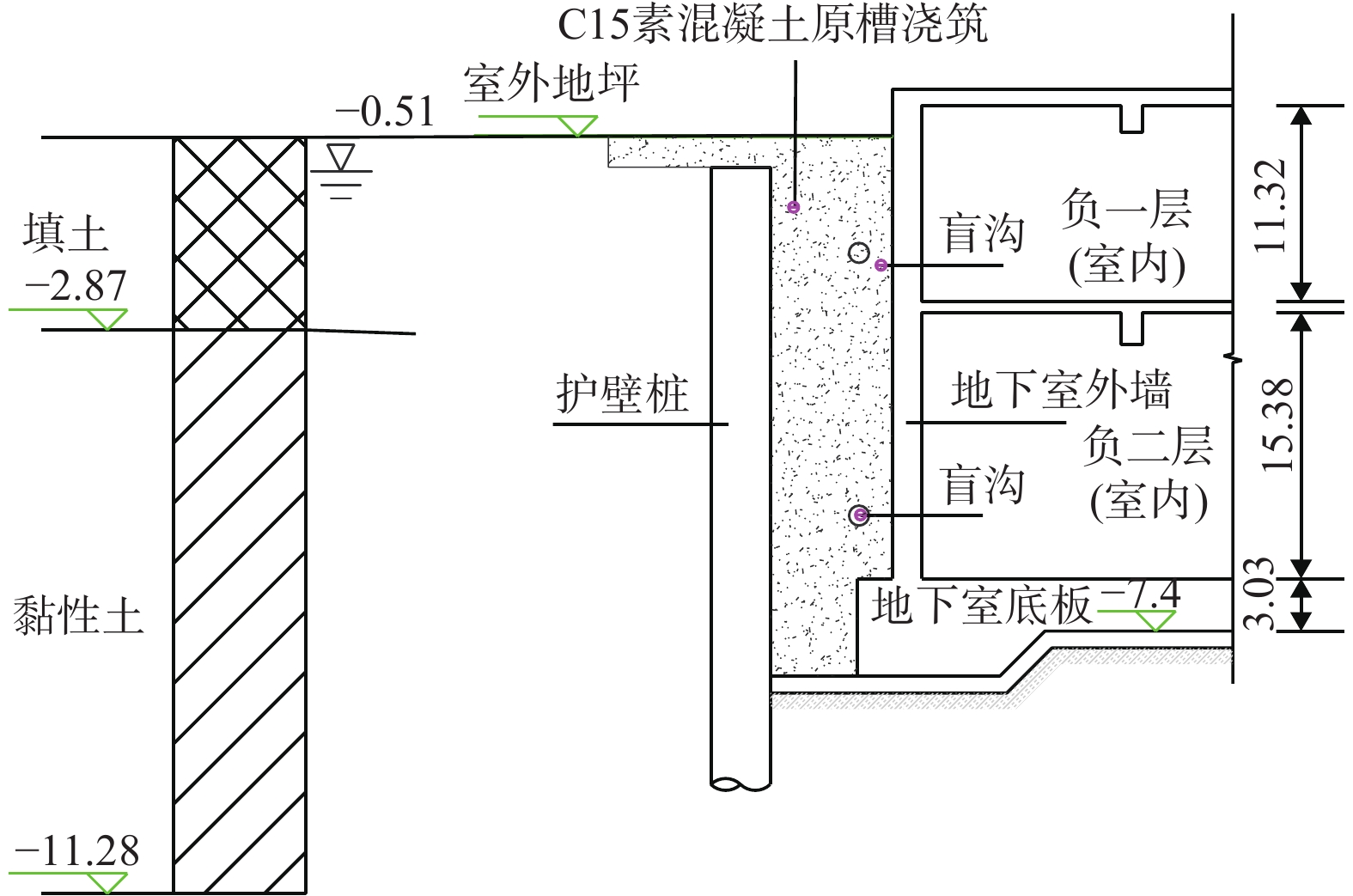
 下载:
下载:
